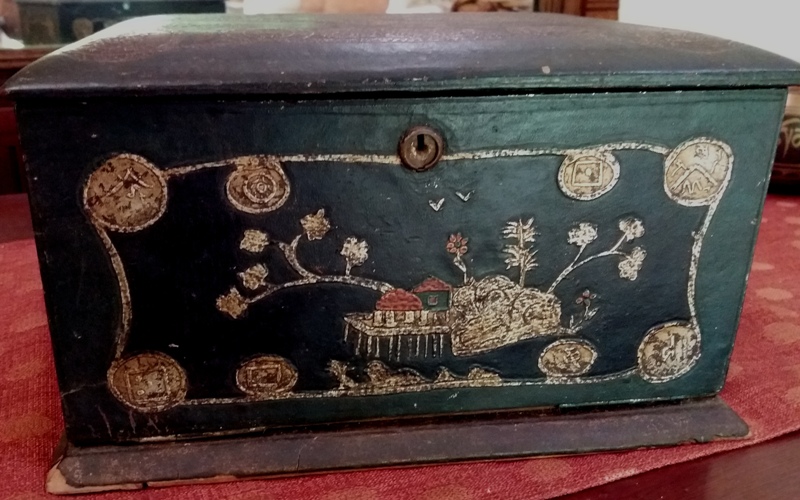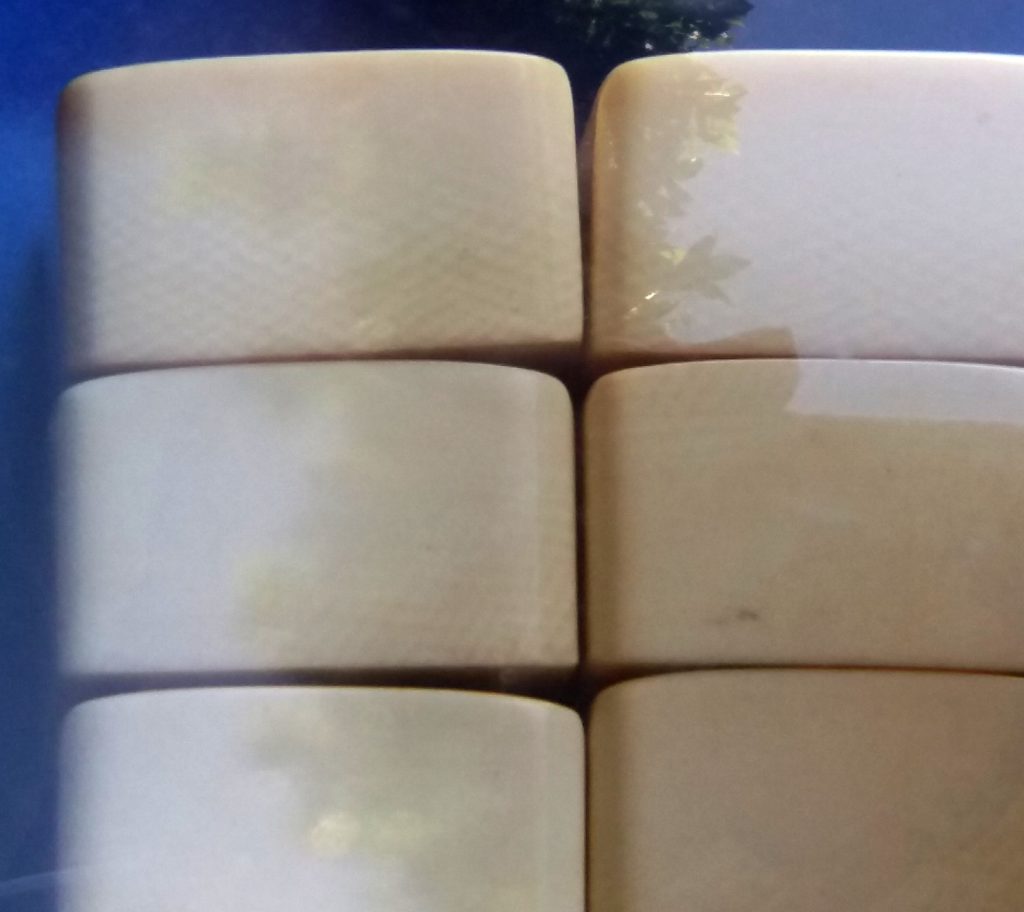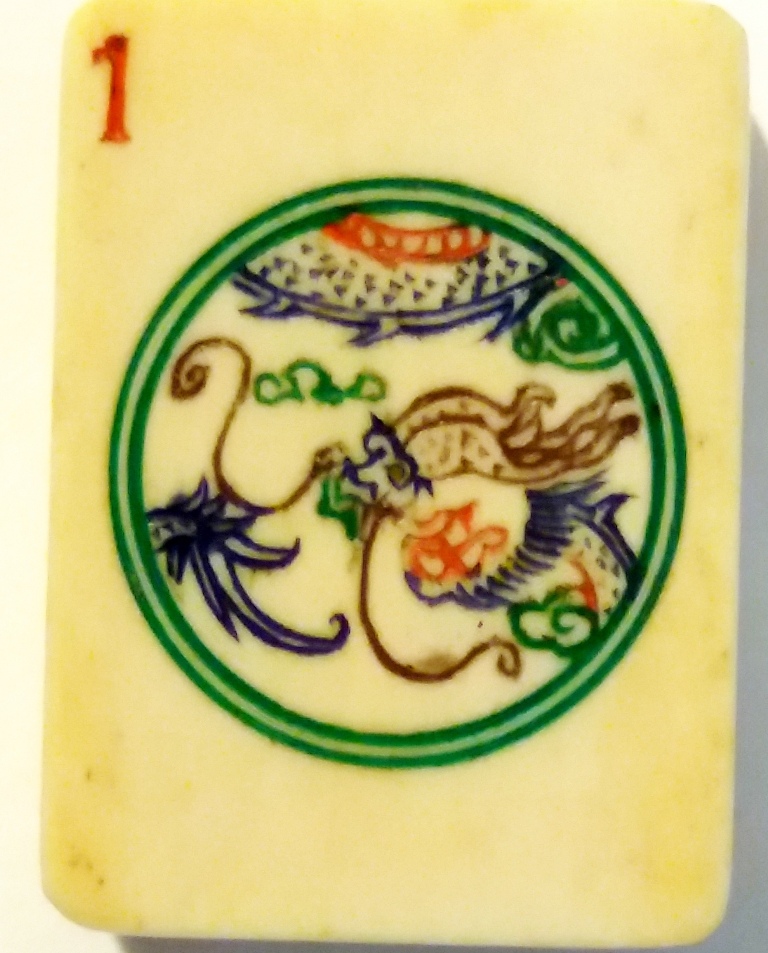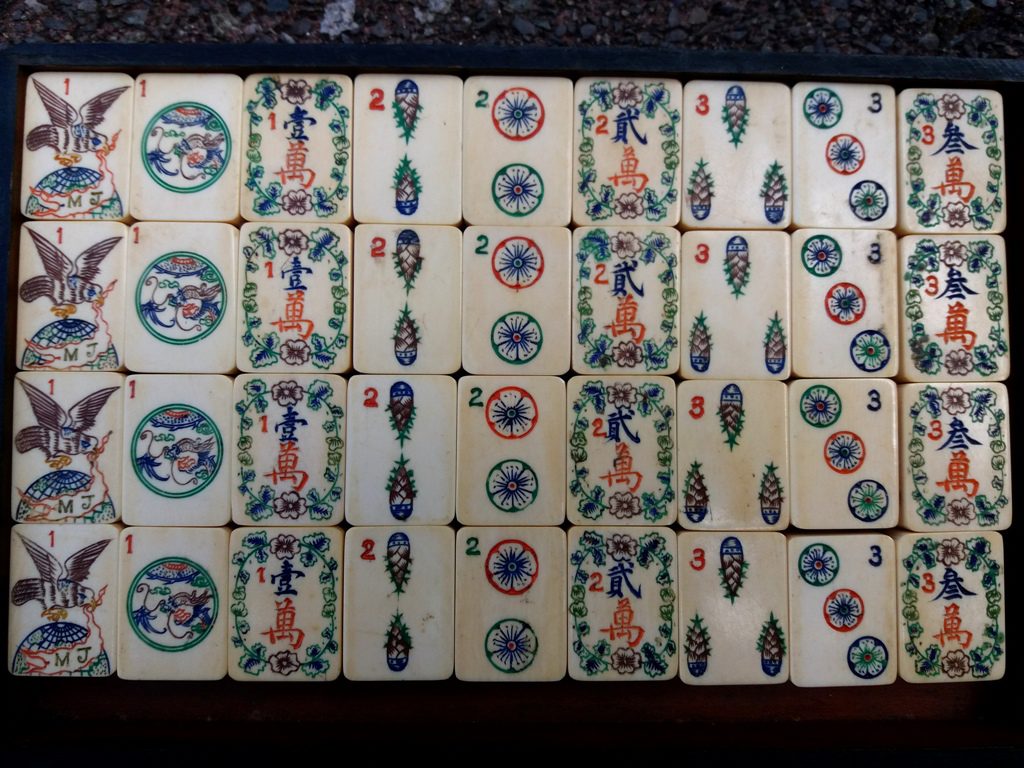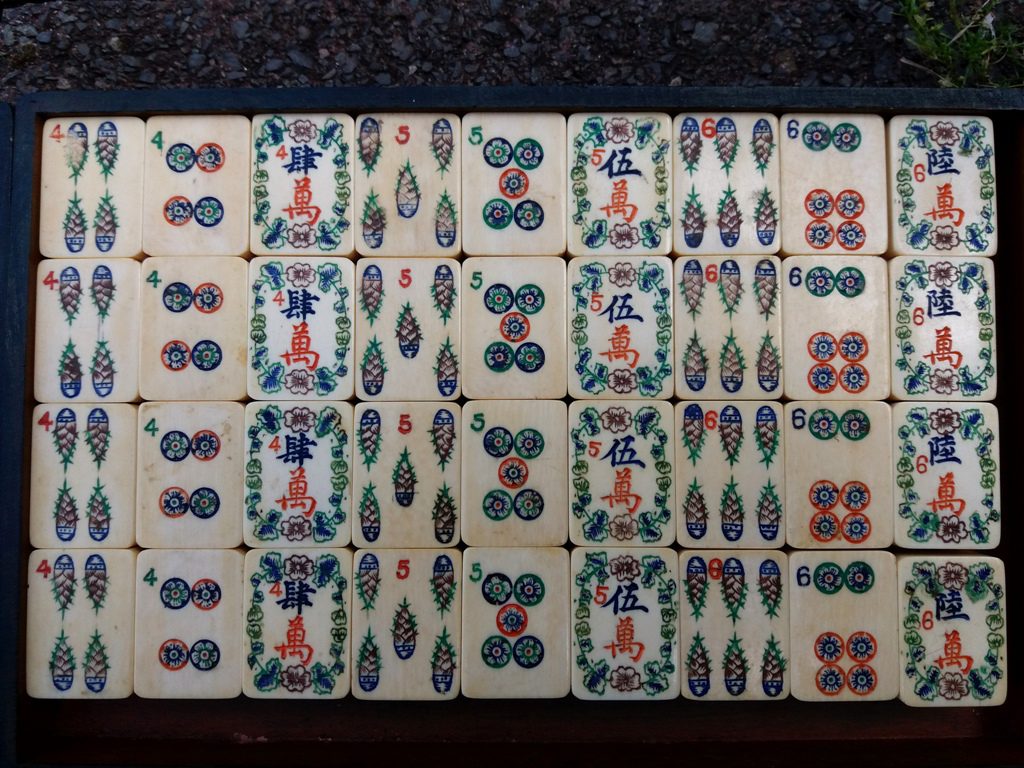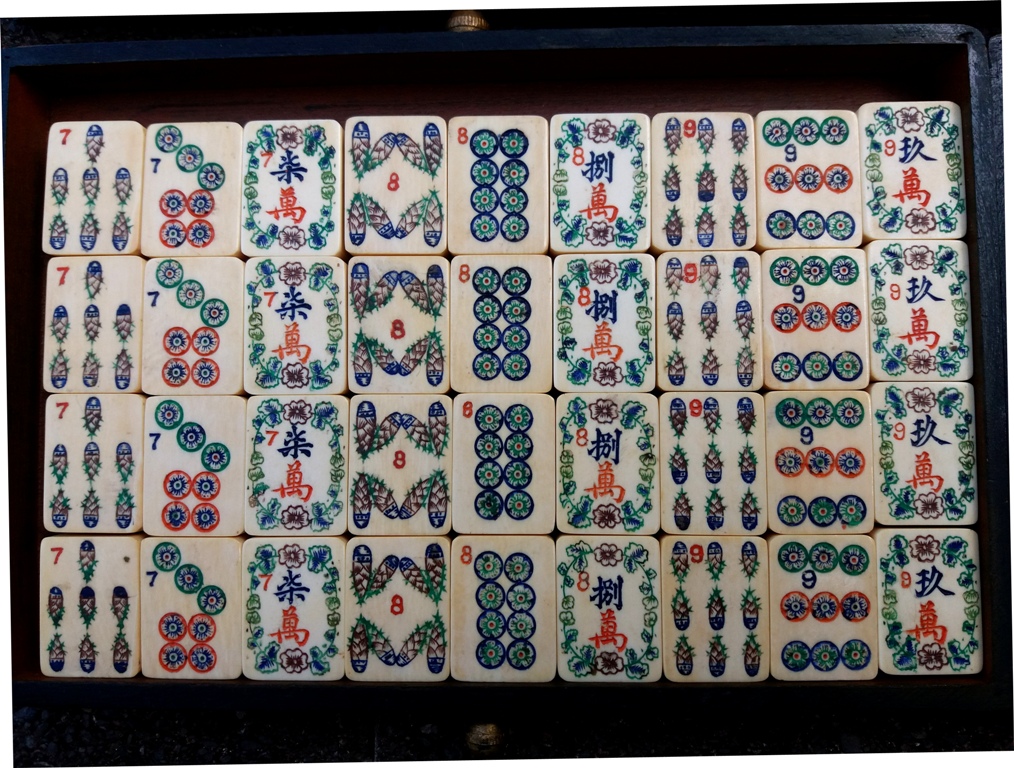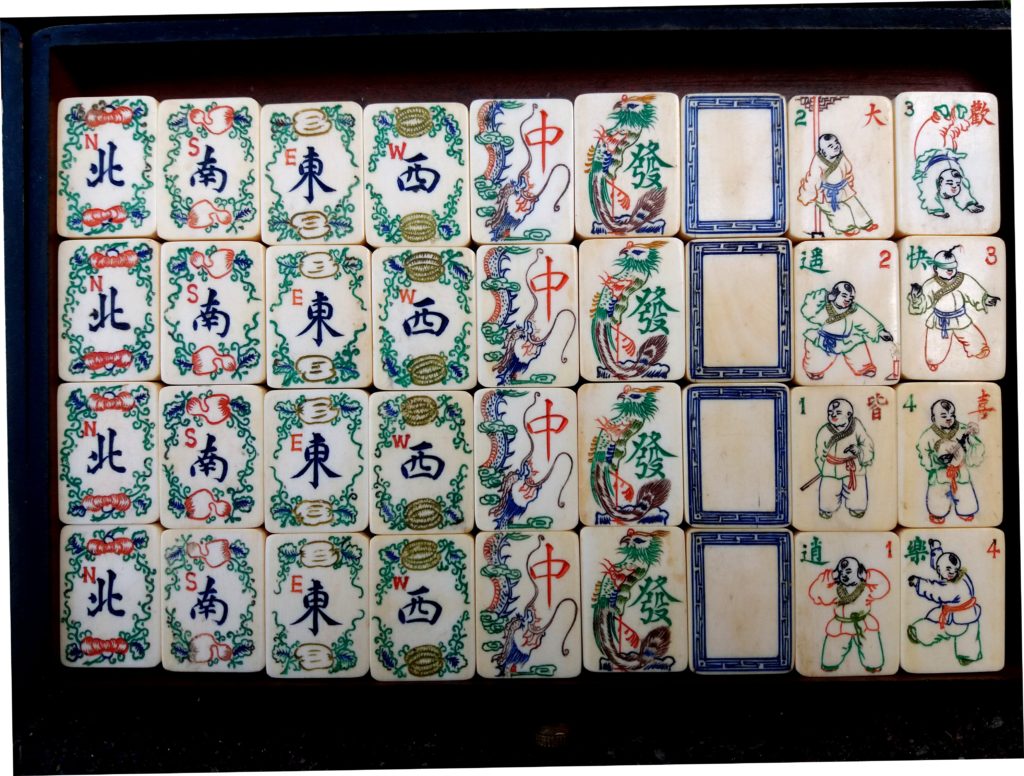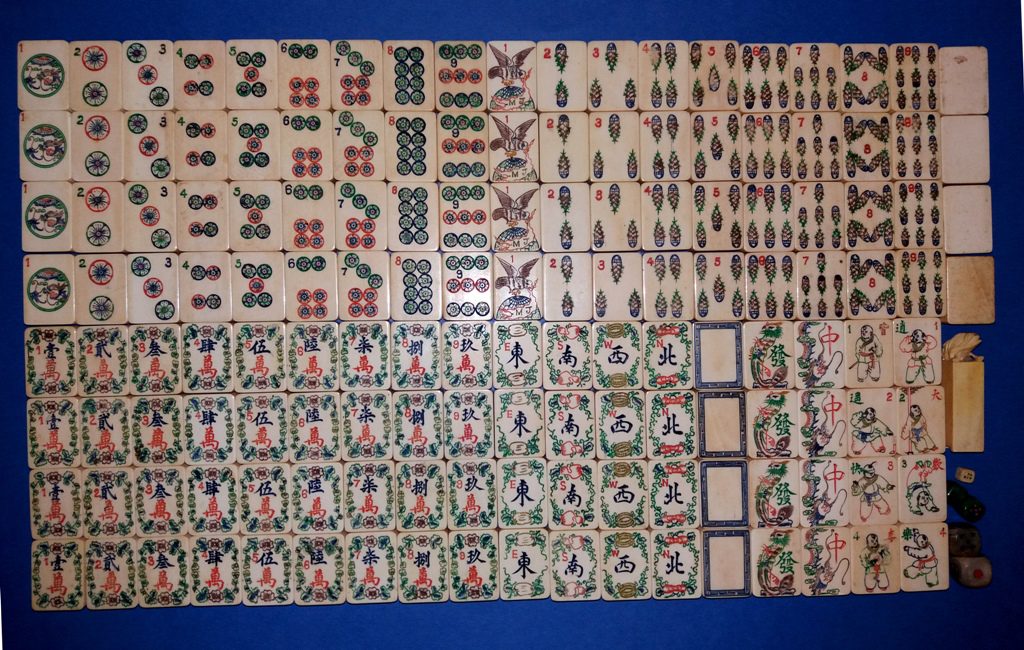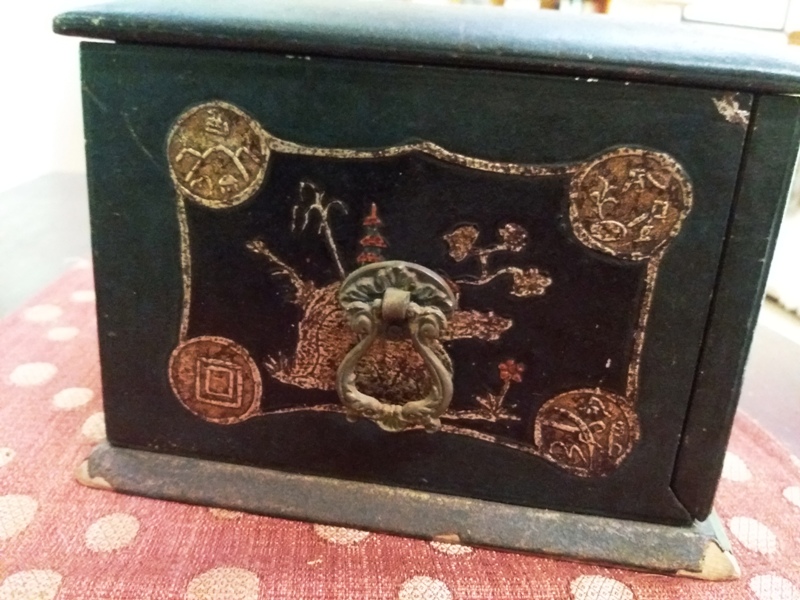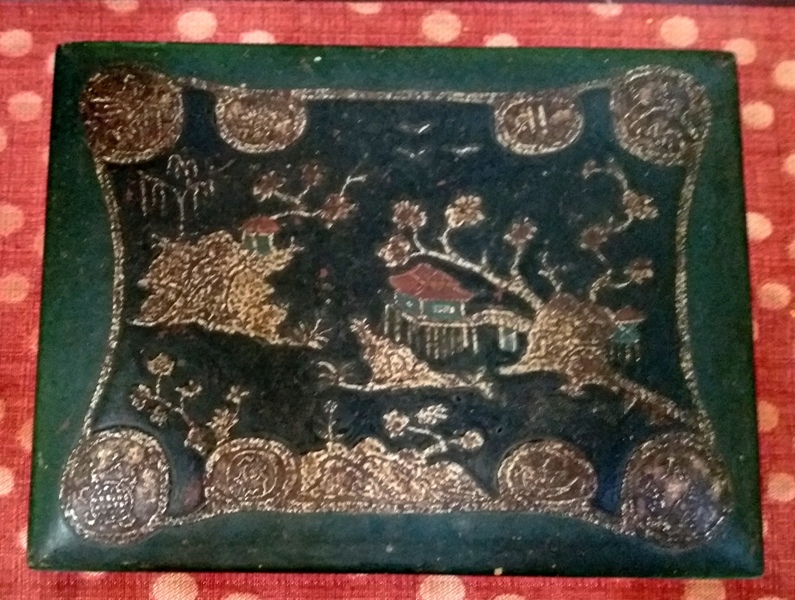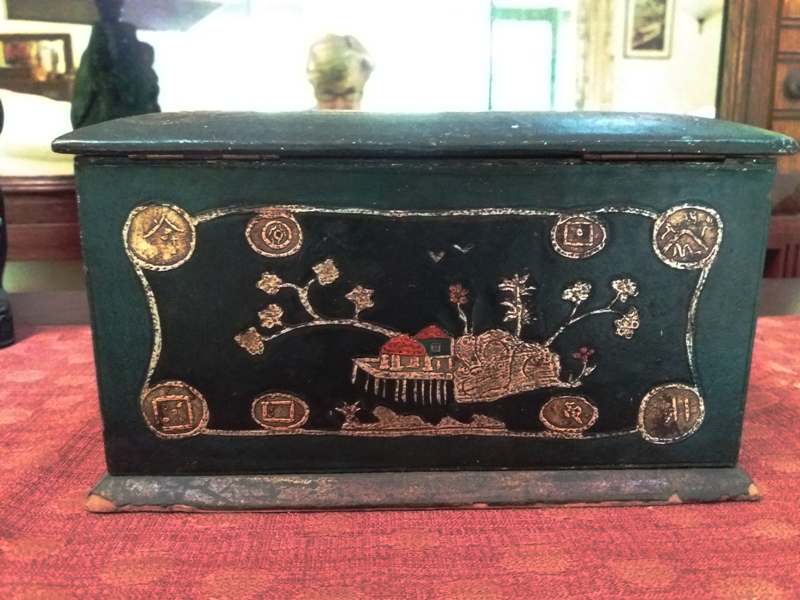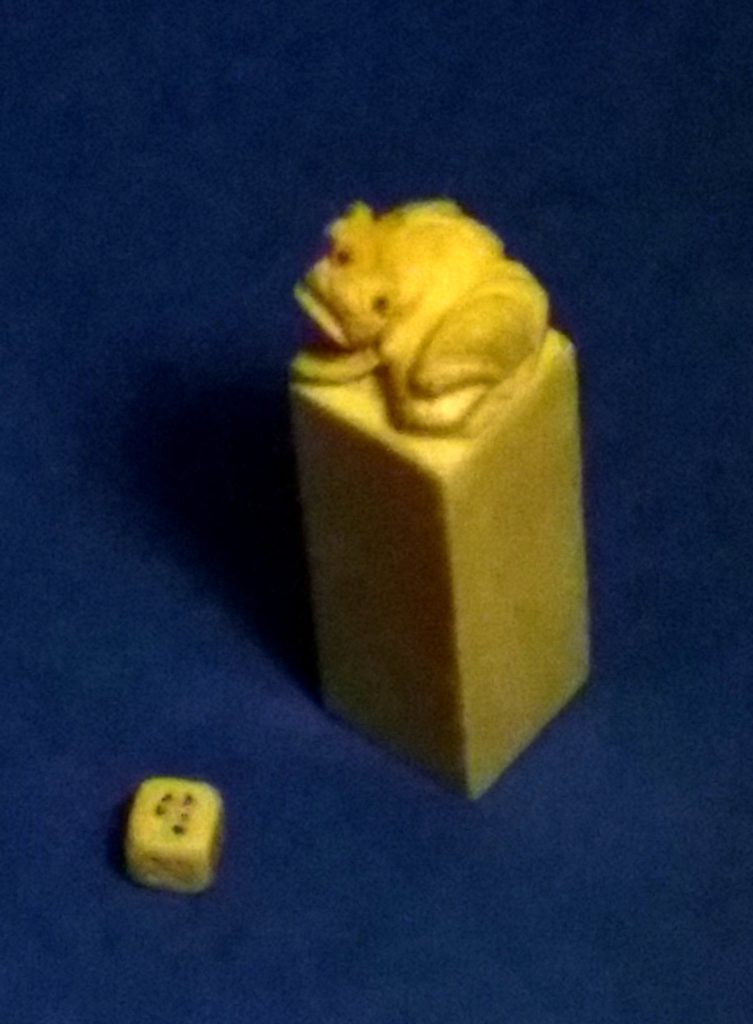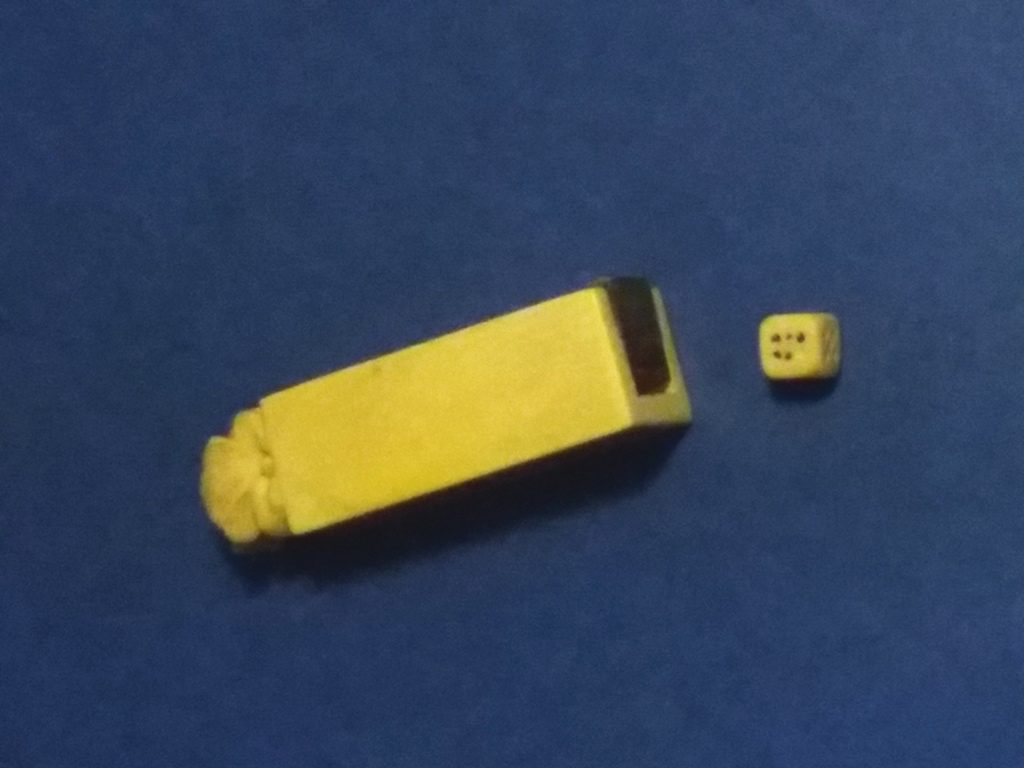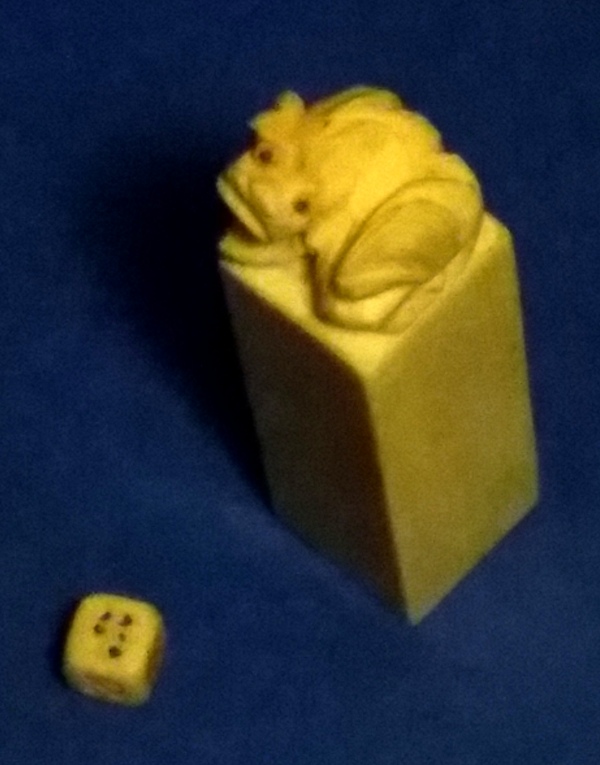Fully carved sets are rare, as are ivory ones, so it was amazing to get an email about one. The owners were curious about it. Their set is a true Mahjong Treasure, and I am delighted to share the images with you. We'll start with the box.
It's made of pigskin, painted in red and gold and embossed. Note there's a keyhole for a lock toward the top of the front.
People who have tiles that are a combination of a white material and bamboo often think their sets are made of ivory and bamboo, but usually their sets are bone and bamboo. This set is pure ivory. You can see the criss-cross chevron pattern, known as Schreger lines, on the top two tiles.
We'll go to the One Dot, the inspiration for the Joker pattern of many of the newer sets. Here the Dragon is pretty easy to decipher, although he is way too big to be entirely on the tile. He's curled up, and we see three parts of his body. If you think of the circle as a clock face, his head is in the center of the tile, his neck at 4:00, the middle part of his body (upside down) from 11:00 until 1:00, and his tail at 8:00. Fabulous!
Now we will see how the craftsmen designed all the suits.
The One Bam is a hawk on a globe, a symbol of Chinese military strength. I love that MJ is carved into the tile. The other Bams are bamboo shoots. Dots 2-9 are lovely delicate flower heads. The Craks are floral garlands. But look at the Chinese numbers on the Craks. Those of you with sharp eyes, or those of you lucky enough to own Dee Gallo's Money Set, will notice the numbers are not those we normally see on tiles. Instead they are the ones used in Chinese banking: the numbers are different so as to make it more difficult to change a number into a higher one. Think about Arabic numbers-it's pretty easy to change a 1 into a 7; the Chinese banking numerals made altering numbers impossible.
The other numbered tiles continue with the same patterns.
Onto the Winds, Dragons and Flowers. The Winds, normally quite dull in appearance (except in a Dee Gallo set) are garlands with different squash. In Chinese culture, squash or gourds are symbols of wishes for lots of children, because they have so many seeds in them. And I think the garlands are really vines. (per Primal Trek)
From Primal Trek http://primaltrek.com/gourd.html
The Chinese language has a large number of written characters but a smaller number of spoken sounds so many Chinese characters share the same or similar pronunciation (please see Hidden Meaning of Symbols). The Chinese have a strong propensity to associate similar sounding words. For example, trailing gourd vines are described in Chinese as man (蔓}. This same character can also be pronounced as wan and has the exact same pronunciation and meaning as 万 which means "10,000". Because the gourd contains many seeds, the Chinese associate the gourd with "10,000 children". In ancient China, parents hoped for many sons and grandsons so the gourd became an important charm symbol for a large family with many children.
We have a Dragon with the Red Chung symbol (The Chung represents China, as does the Dragon) and the Phoenix with the Green Dragon. (When the Dragon and Phoenix are paired together, the Phoenix represents the Empress. ) The White Dragon is the abstract frame we often see on newer tiles. And of course we have the always delightful children at play, this time some are playing with firecrackers. You will see the #1 tile at the bottom shows a boy holding his ears: he does not want to hear the explosion!
Thanks to Ray Heaton, we have a translation of the characters on the Flower tiles:
The full set, in all its glory.
From the owner of the set:

